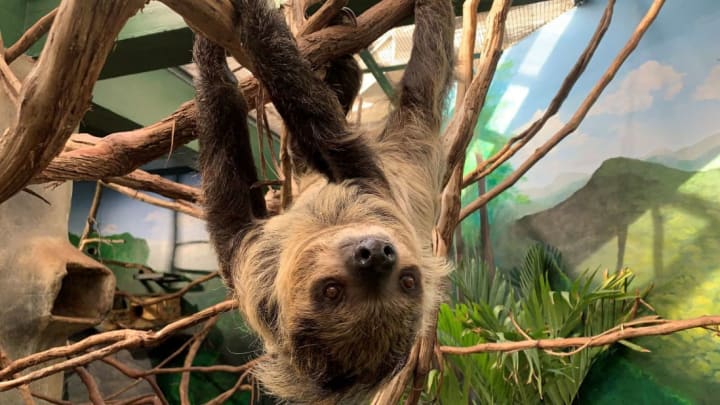The Washington, D.C.-based National Zoo is playing matchmaker for a couple of two-toed sloths. As Smithsonian reports, the zoo acquired a female sloth in December 2019 with a plan to pair her with its longtime resident male. If successful, the new breeding program will mark the first time a sloth has been born at the zoo since 1984.
Athena, a 1.5-year-old sloth from the Ellen Trout Zoo in Lufkin, Texas, made her public debut at the National Zoo on December 22. She currently resides in the zoo's Small Mammal House with a pair of golden lion tamarins and a green aracari, a type of toucan.
The new arrival is what the zoo hopes will be one half of a breeding couple. The other half, a 34-year-old sloth named Vlad, has lived at the National Zoo for many years. The zoo had previously tried mating him with a female sloth named Ms. Chips, but they never appeared to hit it off—and if they did, the staff was unaware. Ms. Chips died two years ago without leaving any offspring.
Nurturing a relationship between two sloths is an appropriately slow process. Before they were officially introduced, Athena and Vlad became acquainted with each other's scents when the zoo staff swapped their blankets. The first time they met face to face was through a mesh barrier. If they express interest in spending more time together, the zoo will move them into the same exhibit.
Even if the animals do get along, they won't be welcoming a new baby any time soon. Female sloths don't reach sexual maturity until age 3, so it will be another year and a half before any serious breeding efforts can begin. According to the National Zoo, the sloth's conservation status in the wild is of "least concern." That means the future of the species doesn't hinge on Vlad and Athena's chemistry—but with decades having passed since a sloth was last born there, a newborn member of the species would be a welcome addition to the zoo.
[h/t Smithsonian]
